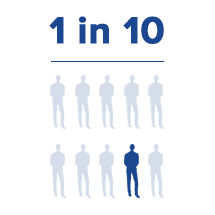TAXIS Pharmaceuticals is developing therapies to combat antimicrobial resistance by getting to the root cause of the issue, targeting the very foundation of bacterial survival.
Our approach goes beyond traditional methods – we’re dismantling the cellular infrastructure, breaking down barriers, and disrupting the mechanisms that fuel antimicrobial resistance.
At TAXIS Pharmaceuticals, we envision a world where antimicrobial resistance is a thing of the past.
Our mission is to preserve modern medical innovation, restore the efficacy of antibiotics, and save lives.
Our Investigational Therapeutics
TXA709 – FtsZ Inhibitor Candidate
Targets bacterial cell division protein.
TXA709, our lead oral anti-MRSA agent, completed Phase I trials with no serious adverse events. It disrupts bacterial cell walls and holds potential for future development against Gram-negative bacteria. Designated a Qualified Infectious Disease Product (QIDP) by the FDA.
Efflux Pump Inhibitors (EPIs)
Aims to shut down bacterial defense mechanisms.
This candidate aims to enhance existing antibiotics by inhibiting efflux pumps in multidrug-resistant bacteria like Pseudomonas aeruginosa, preventing the bacteria cells from flushing out antibiotics.
Dihydrofolate Reductase Inhibitors (DHFRIs)
Targets a crucial bacterial enzyme, hindering cell proliferation.
Focused on treating highly resistant gonorrhea, this candidate aims to disrupt the synthesis of essential materials for bacterial growth, providing a robust defense against future resistance.
Tackling the Antimicrobial Resistance Crisis
Overuse and misuse of antibiotic agents have contributed to the spread of resistant bacteria, posing a serious health risk that the World Health Organization (WHO) describes as a global health emergency. TAXIS is focused on developing new classes of anti-resistance agents to treat life-threatening, multidrug-resistant bacterial infections.

ANTIBIOTIC RESISTANCE: FACTS & FIGURES
At least 2 million people in the United States acquire serious, antibiotic resistant infections every year
Centers for Disease Control, Antibiotic Resistance Threats in the United States, 2013. https://www.cdc.gov/antimicrobial-resistance/media/pdfs/ar-threats-2013-508.pdf?CDC_AAref_Val=https://www.cdc.gov/drugresistance/pdf/ar-threats-2013-508.pdf. Accessed August 5, 2015.

At least 23,000 people die each year in the United States as a result of antibiotic-resistant infections
Centers for Disease Control, Antibiotic Resistance Threats in the United States, 2013. https://www.cdc.gov/antimicrobial-resistance/media/pdfs/ar-threats-2013-508.pdf?CDC_AAref_Val=https://www.cdc.gov/drugresistance/pdf/ar-threats-2013-508.pdf. Accessed August 5, 2015.

Up to 50% of all antibiotics prescribed are not needed or not optimally effective as prescribed
Centers for Disease Control, Antibiotic Resistance Threats in the United States, 2013. https://www.cdc.gov/antimicrobial-resistance/media/pdfs/ar-threats-2013-508.pdf?CDC_AAref_Val=https://www.cdc.gov/drugresistance/pdf/ar-threats-2013-508.pdf. Accessed August 5, 2015.

The average cost of treating a methicillin-resistant Staphylococcus aureus or MRSA infection exceeds ~$35,000 per case
The Journal of Healthcare Contracting, Looking for MRSA. http://www.journalofhealthcarecontracting.com/article-marapr2008-lookingformrsa.asp. Accessed August 5, 2015

1 in 10 hospitalized patients in the United States will acquire an infection reflecting an economic burden of $6.7B
Plowman RP, Graves N, Roberts JA. Hospital acquired infection. London Office of Health Economics; 1997

MRSA represents 5% of the total cases of antibiotic resistance each year, but accounts for nearly half of the mortalities
Centers for Disease Control and Prevention. Active Bacterial Core Surveillance http://www.cdc.gov/ncidod/dbmd/abcs/meth-case.htm. Accessed August 20, 2015

No major new types of antibiotics have been developed in the last 30 years
World Health Organization, Antimicrobial Resistance: Global Report on Surveillance 2014. http://www.who.int/drugresistance/documents/surveillancereport/en/. Accessed August 5, 2015